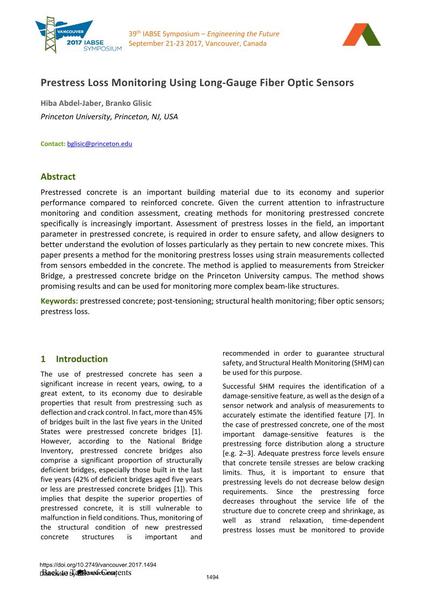Prestress Loss Monitoring Using Long-Gauge Fiber Optic Sensors

|
|
|||||||||||
Bibliografische Angaben
| Autor(en): |
Hiba Abdel-Jaber
(Princeton University, Princeton, NJ, USA)
Branko Glisic (Princeton University, Princeton, NJ, USA) |
||||
|---|---|---|---|---|---|
| Medium: | Tagungsbeitrag | ||||
| Sprache(n): | Englisch | ||||
| Tagung: | IABSE Symposium: Engineering the Future, Vancouver, Canada, 21-23 September 2017 | ||||
| Veröffentlicht in: | IABSE Symposium Vancouver 2017 | ||||
|
|||||
| Seite(n): | 1494-1498 | ||||
| Anzahl der Seiten (im PDF): | 5 | ||||
| Jahr: | 2017 | ||||
| DOI: | 10.2749/vancouver.2017.1494 | ||||
| Abstrakt: |
Prestressed concrete is an important building material due to its economy and superior performance compared to reinforced concrete. Given the current attention to infrastructure monitoring and condition assessment, creating methods for monitoring prestressed concrete specifically is increasingly important. Assessment of prestress losses in the field, an important parameter in prestressed concrete, is required in order to ensure safety, and allow designers to better understand the evolution of losses particularly as they pertain to new concrete mixes. This paper presents a method for the monitoring prestress losses using strain measurements collected from sensors embedded in the concrete. The method is applied to measurements from Streicker Bridge, a prestressed concrete bridge on the Princeton University campus. The method shows promising results and can be used for monitoring more complex beam-like structures. |
||||
